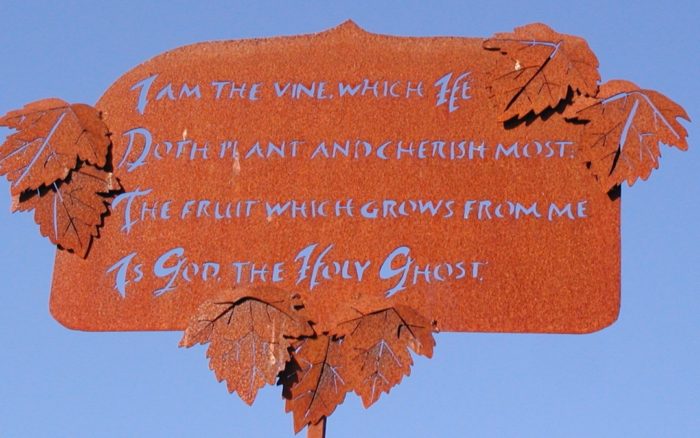The Maturing of a Vineyard
The maturing of a vineyard is not unlike the maturing of a human being. We are of a culture that idealizes youthful image and behavior. Perhaps that is why so many people enter analysis in their early 40’s: youthful pursuits no longer make sense or work. Dreams reflect unexplored, ignored territory. So much of my work as a Jungian analyst involves this transition.
But, for whatever reason, I didn’t expect this same process with the vineyard as well!
On Saturday our son Jesse, Donald, and I met with a new Biodynamic consultant, Daphne Amory. The fourth year of drought has stressed the vines and we were worried that their twenty-some years were catching up with them. Some of the vines appear to be in decline. Common standard practice often replants when vines reach 20-25 years.
But we were favorably surprised when Daphne stated that she hated to see a vineyard pulled just as it was reaching maturity! — and that she saw little evidence of disease. She reflected how the vines were holding their shape, a good sign, the leaves spaced as they should be, although not as vigorous as we might want— the drought was affecting them. She also stated that with vines, the condition now is the result of conditions two years before. This may be reflective of our viticulture practices, changes in climate, or disease. When you are working with vines, you are working with the past and with the future. Not unlike thinking of our seven generations in our actions!
The process with Daphne is similar to Jungian analysis. Biodynamic agriculture tends to be much more what we Jungians call “feminine” in approach, meaning receptive— and in the case of farming, receptive to the beings of the plant and the soil. This means learning to listen to the earth in ways that have been lost these last 200-300 years. Donald and I have been farming biodynamically 16 years now, and we are at a new learning curve. If we replant, we will hit this spot again, Daphne assured us. Yes, we could follow the popular vines-on steroids-approach—push the vines, get as much crop as possible out of them, wear them out, rip them out, and start over. Profit is the guiding star in this scenario, and you hope to get maximum profit, but at what cost to the soul? (And this extractive mentality, unmitigated, does cost the soul! including the Soul of the Earth.)
I was struck with the analogy of where Donald and I are. We are aging, and what we did before is not going to work this next period of time. Perhaps the vines are helping mature our attitude toward ourselves as well as the earth.
Again we were reminded of how important building the soil is. A little compost goes a long way in retaining moisture and in providing a conduit for the plant to the minerals the plant needs to flourish. So Daphne’s first recommendation in this next phase of our relationship to these vines is to heavily fertilize with compost this fall— up to 10 tons to acre. Quite a contrast to ripping out old vines in favor of youthful ones! Again, I am reminded of analytic work, how the beginning is always a kind of composting of what has happened, a breaking down, what alchemists call nigredo. This is the beginning of transformation, and without it, nothing happens. The old way prevails.
This fall and winter we will be working with the earth, listening to the vines, students of what mature vision might entail.
